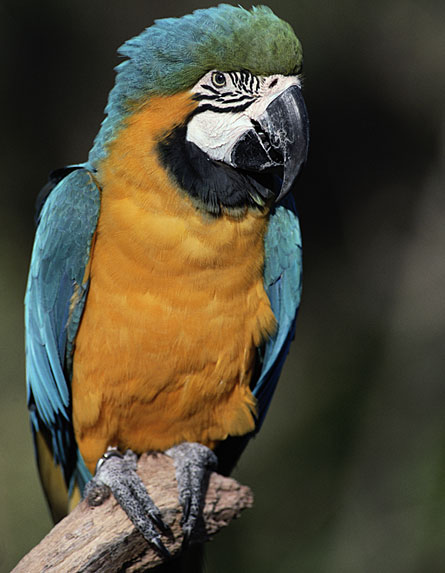For size, brains matter.

Brainpower by itself seems to be a force in evolution, at least in developing diversity of body size in birds, two researchers report in the August American Naturalist.
Bird families with relatively big brains, such as parrots and woodpeckers, tend to have diversified a bit faster than less-endowed species, report Daniel Sol of the Autonomous University of Barcelona and Trevor Price of the University of Chicago.
Brainier lineages are more likely to show extra variety in body size, with hefty species having little handful-of-fluff relatives, according to the new analysis. In studying diversity, Sol and Price focused on the variety in body mass, for which there’s broad data. But other changes, perhaps in food or habitat, go along with this diversity in size.
Brain size nudging along the evolution of body size makes sense according to a scenario proposed in the 1980s, Price says. In theory, large-brained lineages could have lots of innovators willing to peck at new food or find a way to open a seed case or shell. Such technological breakthroughs could spread if the species learned quickly.
Those brainy, innovative animals thus stand a better chance of exploiting a new food or successfully colonizing a new place. And both those accomplishments can expose a population to new forces of natural selection that reshape its future.
Looking for effects of brain size hasn’t been easy. Studies kick up debate over what aspects of the brain to measure and how to compare them. However, researchers such as Louis Lefebvre of McGillUniversity in Montréal have made a case for linking outsized brains to a capacity for innovation.
To test for brain effects on evolution, Sol and Price used published data to establish an average body mass for each of some 7,000 bird species in 120 families. Other records provided brain mass for each of the species, and the researchers worked out which families tended to have the biggest brains relative to body size.
Then researchers reviewed the families, comparing typical brain size (relative to body size) with the variety of body sizes among the species within that family. The researchers also adjusted for the age of a lineage, since more ancient ones would have had more time to diversify. At the end of the analysis, brain size by itself has its own effect, albeit small, on whether a family showed a large variety of body sizes.
“Species with bigger brains tend to evolve more quickly in body size,” Price concludes. Parrots, woodpeckers, hornbills, owls, lyrebirds and crows ranked high both in brains and in diversity in body size. In contrast, pheasants, cormorants and quail didn’t have particularly big brains or much diversity within their families.
The basic premise about the bigger-brained birds invading new niches with new circumstances to shape their evolution sounds like “a pretty good idea,” says Georg Striedter of the University of California, Irvine, who studies brain evolution and birds.
Working with the size of the whole brain and with body weights may not be perfect tools for testing the idea, he says, “but you have got to start somewhere.”





